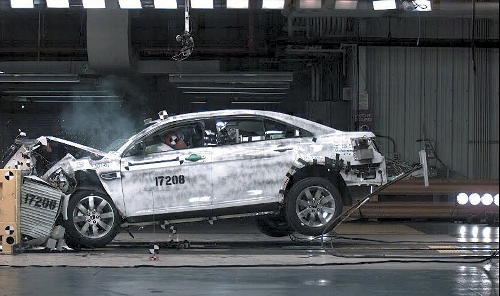Bela Barenyi’s inventions saved countless lives
Placed end to end, you could likely line the number of patents he created all the way to Europe.
There was the safety body shell. The crumple zone. The multipiece steering column.
Placed end to end, you could line the number of lives he has preserved through his passive safety inventions from here to Mars.
Could one man really be responsible for creating so much that was so beneficial for so many?
Bela Barenyi did.
The sad part? You've probably never even heard his name.
Known in engineering circles as the Father of Passive Safety, Barenyi was as unassuming in the public's eye as he was brilliant in the world of automotive technology.
Barenyi always seemed to prefer the shadows.
While others in his field worked on more glamorous areas of safety and design, Barenyi worked on the cutting edge, toiling in the areas most could never even envision.
In many ways, Barenyi was capable of seeing a car crash happen before it actually happened, just the same way he saw safety as the next frontier in the auto industry.
Born in Austria just past the turn of the 20th century, Barenyi was someone with a remarkable story of courage and perseverance.
As a boy he suffered an inflammation of the hip that resulted in a permanent body stiffness. That limitation as a child resulted in hours spent reading advanced technical literature.
Barenyi's father was a colonel in the Austro-Hungarian military and his mother came from one of the wealthiest families in Austria. Barenyi went on to study mechanical and electrical engineering in Vienna, before eventually landing his first job with Austria-Fiat Steyr and Adler automobile companies. After several successful engineering projects -- including the basic design and concept for the Volkswagen Beetle in 1925 -- Barenyi found his way to Daimler-Benz before his 33rd birthday.
At Daimler, Barenyi's world would open up like it had never before.
He was given the free reign to create and it didn't take long to produce remarkable results.
Barenyi developed the world's first comprehensive safety program geared toward the prevention of human injury as the result of a crash.
But out of his 2,500 inventions for the automobile industry, his idea in 1951 of dividing cars into three collision zones was the most significant. Barenyi believed in a rigid passenger cell enclosed by crumple zones, which would absorb the impact of a collision. There was a soft front section, a rigid passenger cell and a soft rear end.
To mass produce his design, Barenyi had to replace the rigid undercarriage with a floor plate. By 1959, his crumple zones were on every Daimler vehicle and would be copied throughout the industry. But that was only the beginning.
He created stronger frames and the idea for protection against side impacts. He created something as simple as the seat belt.
In the end, after 33 years with Daimler, including his role as its head of advanced design, Barenyi was credited with creating the field of passive safety, acquiring patents in many different classifications including sleds, ships, airplanes and automobile.
Many of today's standards in the automotive sector are based on his ideas.
For all of this, Barenyi was eventually recognized by the Automotive Hall of Fame as one of the greatest contributors to public safety.
Mercedes would also follow his lead.
In the years after his departure, Mercedes-Benz engineers pioneered numerous other safety innovations. All were developed using Barenyi's principles and his philosophy. Anti-lock brakes, traction control, electronic-stability program to prevent a skid or spin and electronic braking were all Mercedes-Benz inventions that put the automaker on the cutting edge of the industry.
But the ultimate compliment would come just before his death in 1997 at 90 years of age when his former employer publicly thanked him in an advertisement that ran around the world.
In a safety campaign used to tout the automaker's accomplishments, Mercedes-Benz featured Barenyi's image with a message.
"No one in the world has given more thought to car safety than this man," it read.
Out of the shadows, a face emerged for the world to see.
And everyone finally knew his name.
Steven Reive is a feature writer with Wheelbase Media. He can be reached on the Web at www.wheelbase.ws/media by using the contact link. Wheelbase supplies automotive news and features to newspapers across North America.














